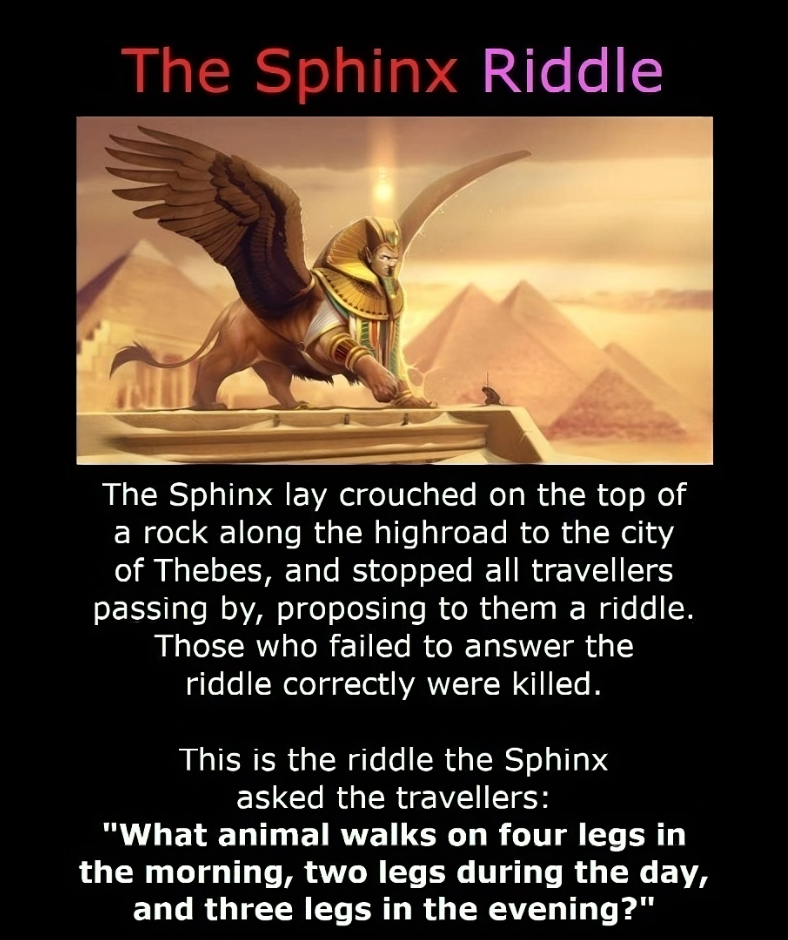In the realm of classic mythology, few creatures capture the imagination quite like the Sphinx – a mystical being with the body of a lion and the head of a woman. This enigmatic creature would crouch atop a rock along the main road to the city of Thebes, posing a riddle to every traveler that dared to pass.
The stakes were high for those who attempted to solve the Sphinx’s puzzle. Those who failed to provide the correct answer were swiftly met with a gruesome fate – the Sphinx would pounce upon them and destroy them. This made the Sphinx’s riddle a test of both wit and courage for all who encountered it.
So, what was the riddle that struck fear into the hearts of Theban travelers? The Sphinx posed the following conundrum: “What animal walks on four legs in the morning, two legs during the day, and three legs in the evening?”

This riddle, steeped in symbolic meaning, was a true test of one’s insight into the human condition. The answer, as provided by the legendary Oedipus, was “man.”
In the morning of life, a human crawls on all fours as a child. In the prime of life, we walk upright on two legs. And in our twilight years, we rely on a cane or walking stick – our “third leg” to support us.
The Sphinx, stunned by Oedipus’ clever response, was so mortified that she immediately cast herself down from the rock, perishing in the process. Oedipus had solved the enigma and proven his intellectual prowess, paving the way for his eventual rule over Thebes.
The Sphinx’s timeless riddle continues to captivate and challenge us today, serving as a poignant metaphor for the stages of human life. Its enduring legacy reminds us that true wisdom lies in our ability to see the bigger picture and find deeper meaning in the simplest of questions. So, are you up for the challenge? I dare you to ponder the Sphinx’s puzzle and see if you can uncover its profound secrets.